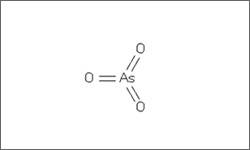Arsenic trioxide

Arsenic trioxide is highly distributed throughout the liver, heart, kidneys and lungs. The treatment is mostly used in treatment of leukemia and is only administered intravenously.1
- 1 Chu, E., & DeVita, V. T. (2015). Physicians' cancer chemotherapy drug manual 2015. Burlington, MA: Jones & Bartlett Learning.
The mechanism of action of the drug is not fully understood, but caspase (programmed enzymes) found in arsenic trioxide induce apoptosis (cell death), which inhibits the process of angiogenesis and related cancerous cell production.1
- 1 Chu, E., & DeVita, V. T. (2015). Physicians' cancer chemotherapy drug manual 2015. Burlington, MA: Jones & Bartlett Learning.
The chief side effect seen in arsenic trioxide is fatigue.1 Other common side effects include headache, diarrhea, dizziness, abdominal pain, nausea, vomiting, fever, shortness of breath, swelling. Notify your doctor if you are pregnant, planning to become pregnant, or breastfeeding before taking arsenic trioxide.
- 1 Chu, E., & DeVita, V. T. (2015). Physicians' cancer chemotherapy drug manual 2015. Burlington, MA: Jones & Bartlett Learning.
